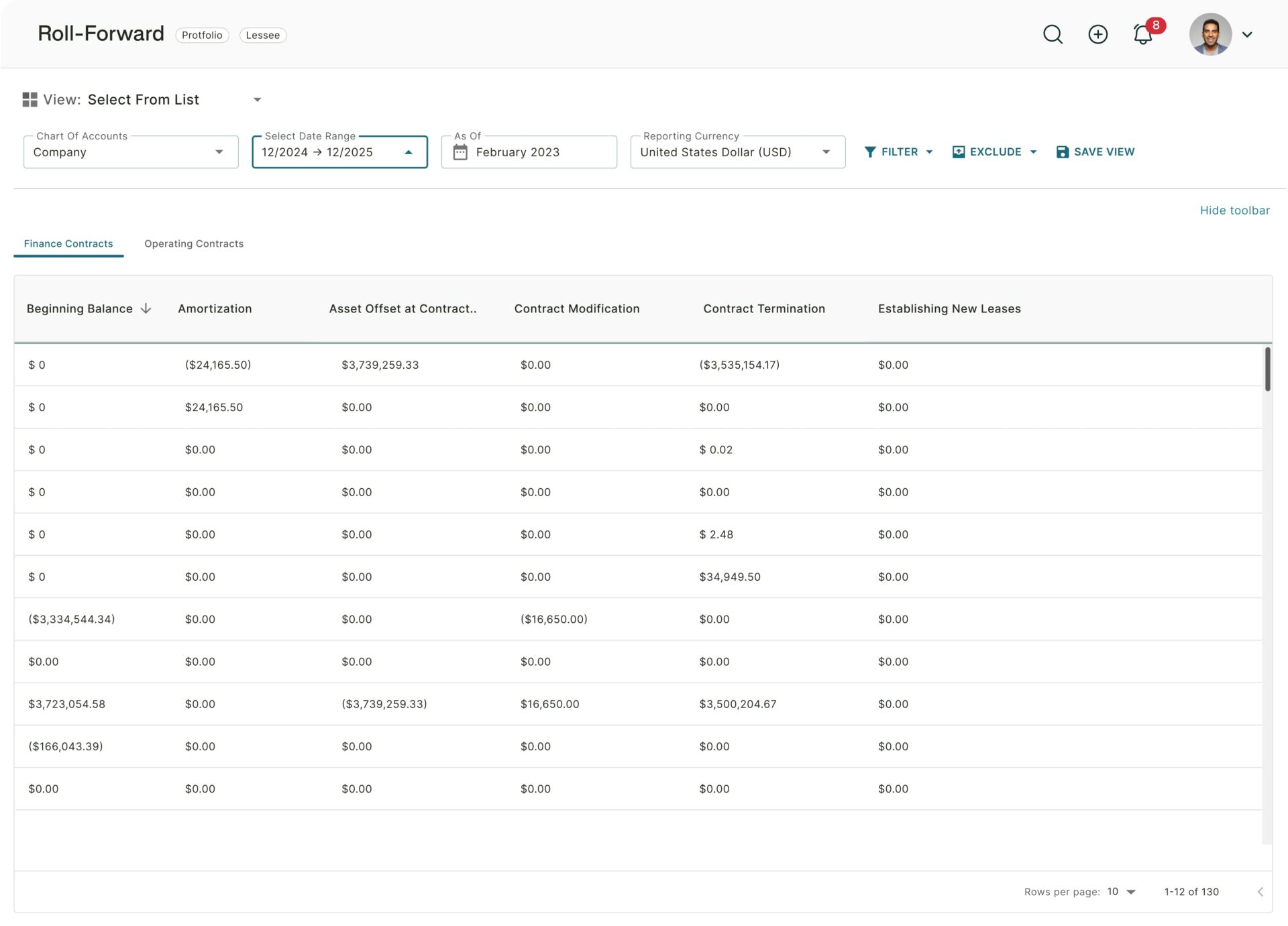What’s the magic number? How many leases can you realistically manage with spreadsheets – and still stay GAAP compliant?
These are big questions we often get asked. There’s no doubt that once you have a certain number of leases in place, spreadsheets are no longer practical in terms of staying compliant, especially with ASC 842 coming into play. But what is this number? 10? 100? 1,000?
In this article, we’ll give a number as a threshold where, in our opinion and based on our experience, it’s no longer practical to continue managing your leases using a traditional spreadsheet tool, and you should consider implementing lease accounting software.
Primer: new accounting standards have changed the game
Thanks to recent changes in accounting standards, most companies around the world will be required to record their leases on the balance sheet. What does this mean? There’s going to be a giant right-of-use (ROU) asset added to your balance sheet, along with a corresponding liability.
Oh, and you’re going to have to keep a close eye on your lease contracts. Historically, leases have been relegated to the filing cabinet after they’ve been signed, with just a regular expense showing up on the income statement. An accounting leader (controller, CFO or similar) will document the expense obligations and pay the monthly bills, while the contract itself collects dust.
Enter ASC 842
Now your lease has a real-time asset and liability balance to manage. And if your monthly lease payment changes, or you expand, renegotiate, or exercise an option – your asset balance gets re-measured.
What’s more, leases can exist in places you never even expected – including contracts where the word “lease” isn’t even mentioned! ASC 842 has changed the game when it comes to the recognition, measurement and presentation of leases. You need to keep a closer eye on lease contracts than ever before.
The concept is simple for an experienced CPA. Managing this process however, is another story entirely.
Managing leases with ASC 842
If you have 1 lease, you can manage it in a spreadsheet like you’ve done for ASC 840. Yes, it can be a pain when certain numbers change – such as interest rates or payback periods. And you have to keep referring back to ensure your journal entries are correct. But it’s manageable.
If you have 5 leases, you can also manage them in a spreadsheet. But, you’ll need to allocate the responsibility to an analyst in order to maintain the leases. And if your equipment or real estate is complex, non-typical or often modified, that person will have to be well-versed in accounting principles in general and ASC 842 in particular.
If you have 10 leases, you’re in software territory. Software can cost up to $1,000/month, but your time is more valuable – probably by orders of magnitude.
If your accounting manager responsible for ASC 842 spends 5 hours a month on keeping leases organized and ensuring all information is audit-ready, that’s $1,000 in salary (plus benefits) that you’re spending towards a full-time employee. Add to that your own time of checking the calculations, output and doing sanity checks on the final result. But these numbers probably still put you in a good spreadsheet versus software debate.
So where do the scales tip towards software?
Specific benefits of lease accounting software
We’ve established that 1 lease on spreadsheet software is manageable, 5 is still doable, and 10 is a stretch but within the realms of possible. The additional benefits the lease accounting software provides however tip the scales heavily in favor of going the software route.
Minimize Risk
If you’re looking at lease accounting software, in most cases the software vendor itself is a specialist in contracts, leases and the relevant GAAP guidelines. So by selecting the right software, you’re buying into their customer base and domain expertise. What’s more, with many software vendors most of the process is automated – in some cases the entire process, from automatically scanning lease contracts, through to calculations and journal entries.
All of this reduces the chance of manual (ie. human) errors.
Manage ALL of your contracts
A good software vendor will understand that GAAP compliance goes beyond leases, and extends to the entire contract space.
There have been heavy GAAP/IFRS regulations around Rev Rec (ASC 606), Cloud Computing, Fixed Assets and more that can all be solved with one centralized system. Moreover, many contracts include lease elements such as embedded leases, which come under the purview of ASC 842.
With the right lease accounting software in place, you can think beyond just leases, while ensuring your entire lease space is covered.
Optimize contracts
Digitizing a contract can open a whole new world of value. When an expense contract gets signed, an AP process is set up – but who ensures the ongoing expense matches the contract terms?
What if you’re approving invoices but they’re above what was agreed in the contract?
Software can connect contracts with an ERP process, whether it’s reconciling a lease contract to AP, a revenue contract to AR, or ensuring you’re not paying a vendor beyond its term.
Frequent contract updates and currency translations
Updating contracts, such as leasing a fleet of cars, on a monthly or quarterly basis can also be a cumbersome task. Imagine having to terminate two car leases, adding a new lease, and modifying a lease if your employee decides to extend the lease for the car. All these can be done with a click of a button with a software solution and with a clear audit trail.
Additionally, having contracts in currencies that are not the same as your functional and reporting currency means reevaluating your liability and translating your expenses. Having a software update the currency rates and recalculate all the relevant balances will save valuable time and effort and minimise risk of mistakes
Reduce tech drag
We’ve all experienced that sinking feeling when your Excel spreadsheet starts slowing down, stops altogether and then crashes, leaving you praying that your work is backed up.
We’re big fans of Excel, but unfortunately the program wasn’t built to handle large amounts of lease contracts, or to integrate with your accounting software. That means a whole lot of switching between windows as you journalize transactions and double-check calculations.
Having specific lease accounting software in place reduces this drag and makes the entire process a breeze.
ASC 842: Show me the magic!
At the beginning of this article, we promised a “magic number:” that point after which it’s no longer practical to keep using spreadsheets to manage your leases. Well, here goes!
10 leases. That’s our magic number. This is the point at which you should seriously consider lease accounting software. Sure, using spreadsheets for 15 or even 20 leases is still possible and indeed many organizations still do this.
However with ASC 842 coming into effect, and the requirements around balance sheet recognition of an asset and liability, it’s going to become increasingly difficult to maintain your leases using spreadsheets.
Our advice? Make the change now. You won’t regret it.





